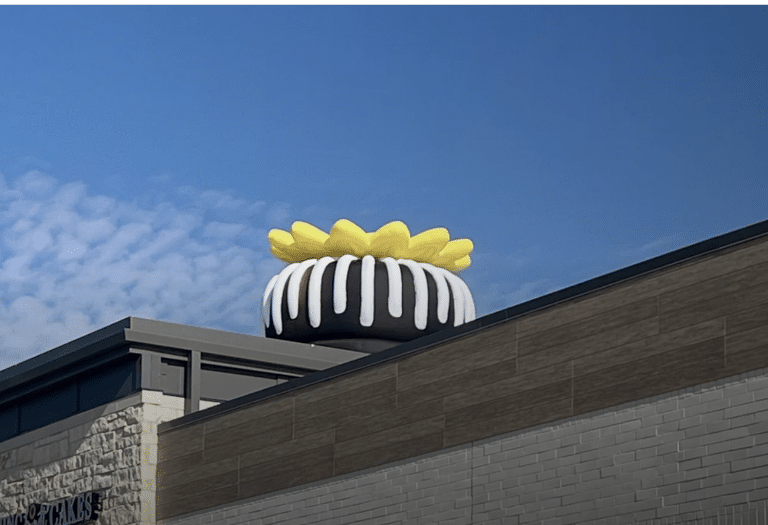Explore how the delicate, night-blooming moonflower reveals an astonishing microcosm — and how the MicroCam X1 makes it possible.
Reasons why Moonflowers are of interest to Gardeners and Scientists
Moonflowers (most typically Ipomoea alba, also known as tropical white morning-glory) are popular since they flower in the evenings with bright white flowers that release perfume into the night air. They are planted by gardeners to form “moon gardens” – peaceful evening retreats that are pleasing to the senses after the sun goes down.
But, as numerous may perceive nothing but petals in the dusk, there is another universe in every flower–veins, cells, and pollen, trichomes, microscopic structures–out of which none can see. With the proper device, such secrets are unraveled–and therein the MicroCam X1 comes into play.
This article will take a closer look at the biology of moonflowers and how to moonflower grow a garden, as well as demonstrate how a pocket microscope camera (the MicroCam X1) can be used to view the microstructure of petals, stomata, pollen grains and others.
Moonflower Basics: Botany, Bloom Cycle and Growing Tips
It is always good to know the plant in a macroscopic level before we become microscopic. The context of the things that you see under magnification makes more sense.
Botanical Profile
Family: Cucurbitaceae (cucumber, calonyctis, etc.)
Scientific Name: ipomoea orientalis
Uses: This is commonly used as a source of crude oil, particularly as a substitute for corn oil, which is typically costly.
Applications: This is used as a source of crude oil; most commonly as an alternative to corn oil, which is generally expensive.
Family: Convolvulaceae (family of morning glories also)
Habit of growth: Twining vine; in one season (according to climate and support structure) it may grow 10-15 feet or more.
Flower characteristics: Huge, trumpet-shaped, white flowers (usually 4-6 inches across) that open in the evening and close in the morning. Their fragrance is powerful and sweet, and attracts nocturnal pollinators (moths, hawk moths).
Native range / climate: The plant is not frost-hardy and is commonly cultivated as an annual outside the tropics.
How to Grow a moonflower garden (moonflower grow a garden)
You may want to include moonflowers to your garden (or whatever container) and these are the best practices:
Timing & Seed Preparation
- Plant indoors 4-6 weeks prior to the end of the frosty season or plant immediately after the soil warms.
- The seeds possess a hard outer covering and hence germination is facilitated by nicking them with a file or by placing them in warm water.
- It is also necessary to have soil temperature because they normally germinate well at soil temperatures of about 70-80 degF (21-27 degC).
Planting & Supports
- Since moonflowers are climbers, give them trellises, fences, pergolas or wires to climb.
- In containers, the large pot with good drainage and a vine-stabilizing anchor should be selected.
Light, Soil & Water
- Complete sunlight is preferable, partial shade will lower the number of blooms.
- Use well-draining soil containing organic matter. Avoid waterlogged soil.
- Maintain soil damp, particularly during hot weather, but not wet. Blooms are enhanced by watering.
Fertilizing & Maintenance
- Apply a fertilizer with a higher percentage of phosphorus (bloom booster), instead of a high-percentage nitrogen fertilizer, which encourages foliage but not flowers.
- Deadheading (cutting away wilting flowers) helps to prevent seed set, and may induce additional flowering.
- Moonflowers can re-root in warmer climates. In colder areas, they are regarded as annuals.
Caveats & Toxicity
- Caution: a lot of the plant of the moonflower (particularly the seeds) is poisonous when eaten.
- Store pets and children away.
With help of these guidelines it is possible to make a prosperous moonflower garden. The moment the vines are growing and the flowers are opening every night, that is when the magic happens and the MicroCam X1 is in place to record the experience.
Microscopic Processes. A Tour Inside a Moonflower
As soon as the moonflower petals are open in the moonlight, we see elegant forms and smell, but that is just the tip of the iceberg. It is much more fancy and complicated under a microscope. With a device such as MicroCam X1 (with 400x up to 4K magnification) it is possible to peep inside the microstructures of petals, pollen, epidermal cells, stomata and so on. Allow us to make a conceptual journey.
Patterns of the Petal Epidermis and Pigment.
- Epidermal cells: These are the outer cells of the petal which are usually shaped and patterned to reflect or refract light. In extreme magnification you may notice curves, ridges or little bumps that reflect light or affect the way the petal will luminize during low light.
- Pigment grains: Although to the eye it appears white, under the microscope the pigment structure or vacuoles can be observed that help to determine the light scattering. These substructures may be dense.
- Cell walls & cuticle: Microfissures or textures can be found on the layers of cell walls or cuticles and affect the water interactions and the petal longevity.
Stomata & Glandular Cells
- Stomata (pores): Leaves and occasionally parts of the flours have stomata (little holes), through which gases pass by. At magnification there can be stomata guard cells, pores, and patterns. These frameworks control the carbon dioxide, oxygen and moisture exchange.
- Floral trichomes and glandular hairs: Certain surface of the flora can have microscopic hairs or glands that either secrete nectar-like, odorous, or protective materials. High magnification reveals these fine hairs as a filamentous structure or glandular structure.
Pollen Grains and Anthers
- Pollen morphology: Pollen is probably the most interesting sight. When blown up magnified, the grains of pollen of a moonflower exhibit remarkable forms– globular, spiny, pore-or furrow-filled. Pollen of every species has a fingerprint.
- Anther surfaces and dehiscence: The ends of the stamen, which secrete pollen, can be fissured, microcracked or even textured. It is easy to see these surfaces by using the microscope to observe the deposition of pollen on pollinators.
Vascular Bundles and Petal Veins.
You might feel micro-veins (vascular bundles) in the petals–particularly just at the junction of the petal and the base. In the fine specimen, fine using a magnification may reveal cell wall fine structure of xylem/phloem wall structure, or of supportive fibers.
Micro-scale Defects, Dust & Pollutants.
Depending on the microscopic examination, dust particles, fungal spores, insect debris, or micro-damage (e.g. small fractures, abrasions) on the surface of the petal can be identifiable. Time-lapse microscopy can reveal the progression of the damage with time, or the process of repairing the flower.
Comparing various petals, buds, or flowers at various times (before daylight, immediately after opening or immediately before closing) will allow dynamic changes to be observed.
Not just aesthetic, all this enhances our knowledge of floral physiology, ecology and even plant health or stress.
The way MicroCam X1 facilitates Moonflower Micro-Exploration.
So you may ask: why not have a microscope of laboratory quality? This is where MicroCam X1 comes in. It is a great companion to field botanists, gardening enthusiasts, educators, or anyone interested in the microscopic world, because it is a unique mixture of portability, usability, and power.
Key Features of MicroCam X1
- 400x magnification: This shows details as minute as 0.01 mm (10 micrometers).
- 5 cm super macro mode.
- Instant twist-to-switch.
- 4K video and 12MP photo.
- Lightweight and tough (approx 160g).
- Live-view sharing.
On-the-job Hints on Moonflowers.
- Timing is crucial
- Stabilize the device
- Use controlled lighting
- Apply low-stress sample prep
- Capture time-lapse
- Annotate and archive
Using regular imaging, you can create a micro-atlas of your garden moonflowers.
What would you find out in the Revelations?
- Patterning or change of epidermal cell shape between petals.
- Micro-cracks or abrasions.
- Particles or spores.
- Variations in pollen morphology.
- Weak hues of coloration.
- Petals affected by structural modification as they age.
To incorporate the Moonflower Micro-Insights into Garden Practice.
The visualization of the microstructures is not simply an object of curiosity — applied lessons can be learned.
In brief – playing with moonflowers using an apparatus such as MicroCam X1 can educate about better gardening practice, significant botanical understanding and even casual citizen science.













